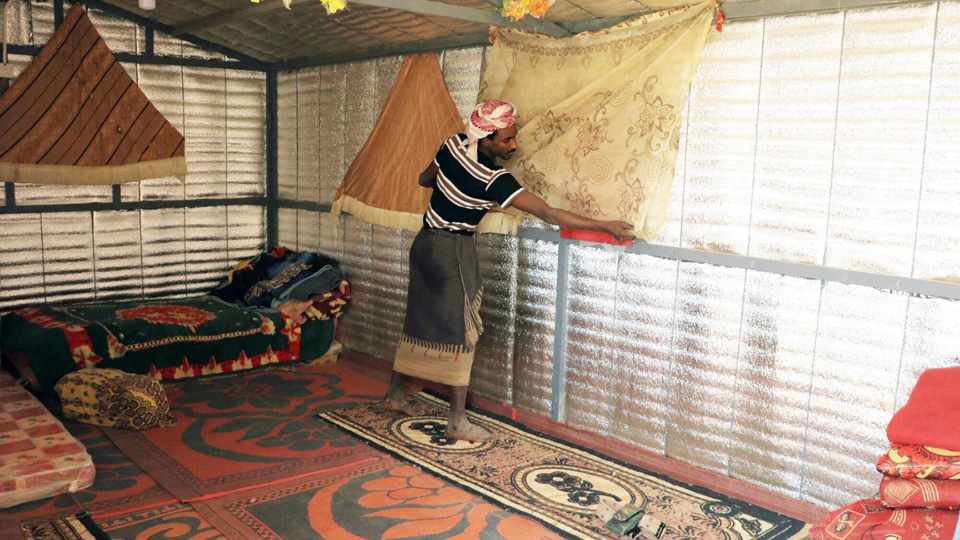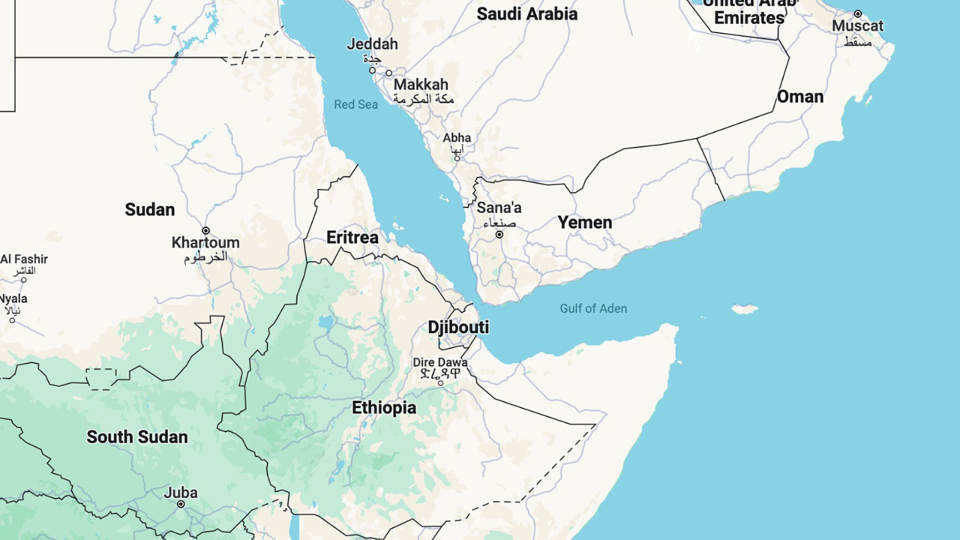
This story appears here courtesy of TheChurchNews.com. It is not for use by other media.
By Mary Richards, Church News
Editor’s note: The last names of the people in this story were not given to protect their privacy.
Ebrahim, his wife and their three children have lived in a Yemen displacement camp for the last two years.
They had to flee their home due to the Yemeni civil war in 2016 and have been displaced twice since then.
“We felt tired and sad that we left behind everything we owned — all our memories, as well as being separated from family and relatives,” Ebrahim said.
He used to work in transportation, but after an injury he could not continue working.
Ebrahim’s family is one of many households in the displacement camp who received “iron net” shelters because of the work of ShelterBox and The Church of Jesus Christ of Latter-day Saints.
The Church prioritizes offering refuge and worldwide aid in its humanitarian efforts. ShelterBox is a nonprofit organization that provides shelters, essential items and technical assistance to help people recover and rebuild after a disaster.
Iron nets are a more durable form of shelter and designed to protect people better from extreme weather in Yemen. They are so called because they have an iron net frame and are constructed on a concrete base. They can have a layer of fireproof thermal insulation and corrugated metal, offering durability, comfort, privacy and security.
When Ebrahim saw the iron nets being installed in the camp, he said he felt that his dream had come true.
“Receiving a new, more stable shelter—it was an indescribable feeling,” Ebrahim said. “The iron net helped us to get privacy and protection from the sun and rain. You now feel that you are living in a home that makes you feel comfortable and reassured.”
The shelters are not designed for people to live in them permanently. However, given the ongoing situation in Yemen, people may end up living in them for years.
ShelterBox’s website explains that Yemen remains one of the world’s largest humanitarian crises. Years of conflict have uprooted millions of people. Two thirds of the population need some form of humanitarian assistance.
But Ebrahim remains hopeful.
“In the future, I hope to get a job and improve our standard of living. I want my three children to learn and build their future — to live a decent life — better than ours.”

ShelterBox-iron-net
Ebrahim shows his iron net shelter, provided by ShelterBox with the support of The Church of Jesus Christ of Latter-day Saints, as he and his family stay in a camp for displaced people in Yemen in 2023. Photo courtesy of ShelterBox courtesy of Church News.Helping Families in Sudan
ShelterBox also provides canvas tents, tarpaulins and rope, mattresses, blankets, floor mats and other items as needed to help displaced people.
Asiza and her husband and three children fled unrest in Sudan and ran to the border with Chad to escape.
After ten days at the border, the family was relocated to a displacement camp where ShelterBox gave them a tent.

Africa-map.jpg
A map shows the locations of Yemen, Sudan and Ethiopia in Africa and Asia. ShelterBox with the support of The Church of Jesus Christ of Latter-day Saints has helped displaced people in those three countries and others in 2023. Map courtesy Google Maps, courtesy of Church News.All rights reserved.Asiza mentioned her gratitude for the quality of the tent, as life in the camp is far from comfortable. Many refugees in the area have had to make due with basic coverings out of branches, cloth or plastic sheets.
The Church of Jesus Christ, ShelterBox, and the nonprofit organization INTERSOS are just some organizations providing emergency shelter and household items for these families.
Asiza has been worried about earning money, having enough food and finding schooling for her children. But having basic needs met in the form of shelter gives her a little bit of peace and comfort, even in the midst of hardship.
Shelter for People in Ethiopia
In many regions of Ethiopia, violence has caused hundreds of thousands of people to be displaced, like Serawite and her family.
“I was preparing food, the violence started, and I ran away with others. I tried to hide my children in the forest, and I tried to bring some things, but I didn’t succeed. Then I returned to my children,” she said.
She had a full life — a home, crops and her own farm. But she lost everything. Now the family has been in the Southern Nations, Nationalities and Peoples Region of Ethiopia (SNNPR) for about six months.
Violence east of the SNNPR broke out in April 2022, displacing thousands of families, many of whom have had to live in inadequate and insecure shelters since.
The Church works with organizations like ShelterBox to support people like Serawite who are displaced to have emergency shelter and essential household items and help their recovery process.
“When I received my aid items from ShelterBox, I was very happy,” Serawite said. “Our home now will be full, with comfortable sleeping and easy cooking, and the old plastic roof and wall will be changed.”
Because of the stability the Church provided her with durable shelter, Serawite is now able to focus more on service to others that have been displaced. She is a woman leader in her new village and goes throughout the camp to educate the community.
“We often discuss how to improve things. We are trying to create women’s associations that support each other,” she said.
“Now my plan is to support my children even more and mostly to see us return to our homes with a lasting peace so that our life of living in tents as internally displaced people will end very soon.”
Copyright 2023 Deseret News Publishing Company.